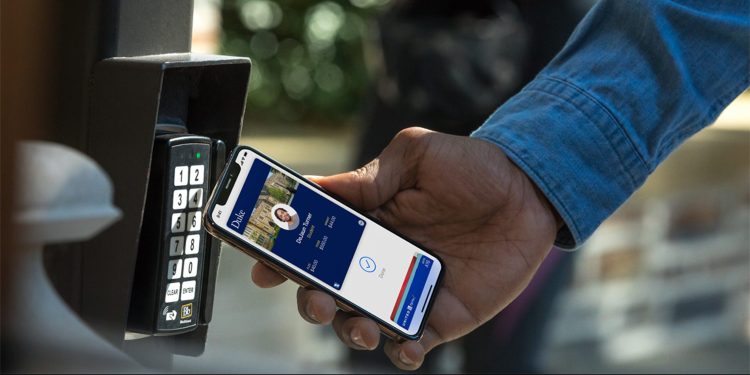I’ve loved NFC technology for almost as long as I’ve known about it, and it’s been around for quite some time. Not only is the Near-Field Communications concept brilliant — tiny radio antennas transfer small quantities of data at sub-1.5-inch distances — but the execution has also been impressive: Today, NFC enables phones to make contactless payments, pair with other NFC-capable devices for higher-bandwidth communication, and read and write “tags” that identify products.
Apple has lagged on NFC for years. Android devices began adopting NFC in 2010, but Apple didn’t come on board until late 2014, and even then, it wasn’t a full embrace: NFC hardware was added to the iPhone 6 and Apple Watch solely to enable Apple’s proprietary wireless payment solution Apple Pay, and could not be used by other apps. It took until late 2016’s iPhone 7 launch for Apple to let some iPhones read NFC tags, and three more years until Apple added NFC writing abilities to iOS 13.
As 2019 draws to a close, iPhones and Apple Watches are only able to make NFC payments with Apple Pay. And those are the only Apple devices with NFC payment abilities: The iPad and iPod touch did not get NFC capabilities back in 2014, and still omit that functionality today. That’s why Apple only pitches contactless student IDs and the like to iPhone and Apple Watch users; even though you can store a card’s data on an iPad or iPod touch, they don’t have the NFC hardware to communicate with payment or ID terminals.
Apologists have made all sorts of excuses for Apple’s approach to NFC over the years, initially questioning whether anyone would care about the technology, later suggesting it didn’t make sense for iPad form factors, and consistently raising amorphous concerns over data security. I’ve found these excuses perplexing from the start, as Android devices were beginning to offer one-tap wireless accessory pairing and NFC tag writing, the latter feature ideal for retailers interested in modernizing their stores. And why not let an iPad mini or iPod touch user pay at a Starbucks or flash a student ID without an iPhone?
June 5th: The AI Audit in NYC
Join us next week in NYC to engage with top executive leaders, delving into strategies for auditing AI models to ensure fairness, optimal performance, and ethical compliance across diverse organizations. Secure your attendance for this exclusive invite-only event.
If you’re an Apple shareholder, the reasons seem pretty obvious. iPhones and Apple Watches generate more revenue than iPads and iPods. Apple Pay is an increasingly important part of Apple’s services business. Why undermine them by giving Apple users other options?
European regulators have been agitated over Apple’s NFC practices for at least a year, suggesting that Apple harms competition by requiring Apple Pay for every iPhone or Apple Watch NFC payment. This week, one house of Germany’s parliament voted to force Apple (and any other company similarly situated) to offer NFC access to payment rivals for a reasonable fee. While that vote hasn’t yet resulted in a signed law, and Reuters originally reported that German Chancellor Angela Merkel wanted the provision withdrawn, there is now said to be “complete consensus within the government over the move.”
Given Apple’s sluggish progress with NFC over the years, it’s no shock that it’s pushing back against the German initiative. “We are surprised at how suddenly this legislation was introduced,” Apple told Reuters today. “We fear that the draft law could be harmful to user friendliness, data protection and the security of financial information.”
Read between the lines and Apple’s implying that it might be forced to compromise the two-tap Apple Pay triggers of the iPhone and Apple Watch to offer support for non-Apple Pay solutions, which also might be less secure than Apple Pay. I’d call these suggestions wholly specious, but I’m sure there’s some way Apple could convolute iOS or watchOS to make them true, just like it left NFC support out of iPads and iPod touches.
The correct solution for Apple — and its growing user base — is to drop the excuses and let users gain full access to NFC capabilities. There was no good reason to prevent $1,000 iPhones from writing NFC tags until late 2019 when $200 Android phones could do so years ago. Similarly, there’s no good reason Apple devices should prevent non-Apple Pay services from making NFC payments if users can use the same cards and services to make payments over Wi-Fi. It’s erecting barriers that actually inhibit user choice and convenience, while claiming the high road on user friendliness and security.
Apple can point to the modest progress it’s made with NFC over the past five years to suggest that it hasn’t been standing still. Currently, iOS allows supported iPhones to read NFC tags if specific apps are opened, and starting late last year, iPhone XS and later models gained the ability to detect tags in the background without opening apps — as long as they’re within sub-1.5-inch proximity. Adding tag writing support in iOS 13 was long overdue, just as adding NFC support to iPads really should happen for the millions of people who rely on them.
If Germany ultimately passes a law requiring Apple to open up NFC to transactional rivals, it may succeed in further improving Apple’s policies for both developers and users worldwide. But by giving Apple the chance to set a “reasonable” fee for NFC access, it may have just suggested a new speed bump for actual competition — one that could lead to litigation and further delays, unless Apple decides to do the right thing for its users, rather than just its shareholders.


